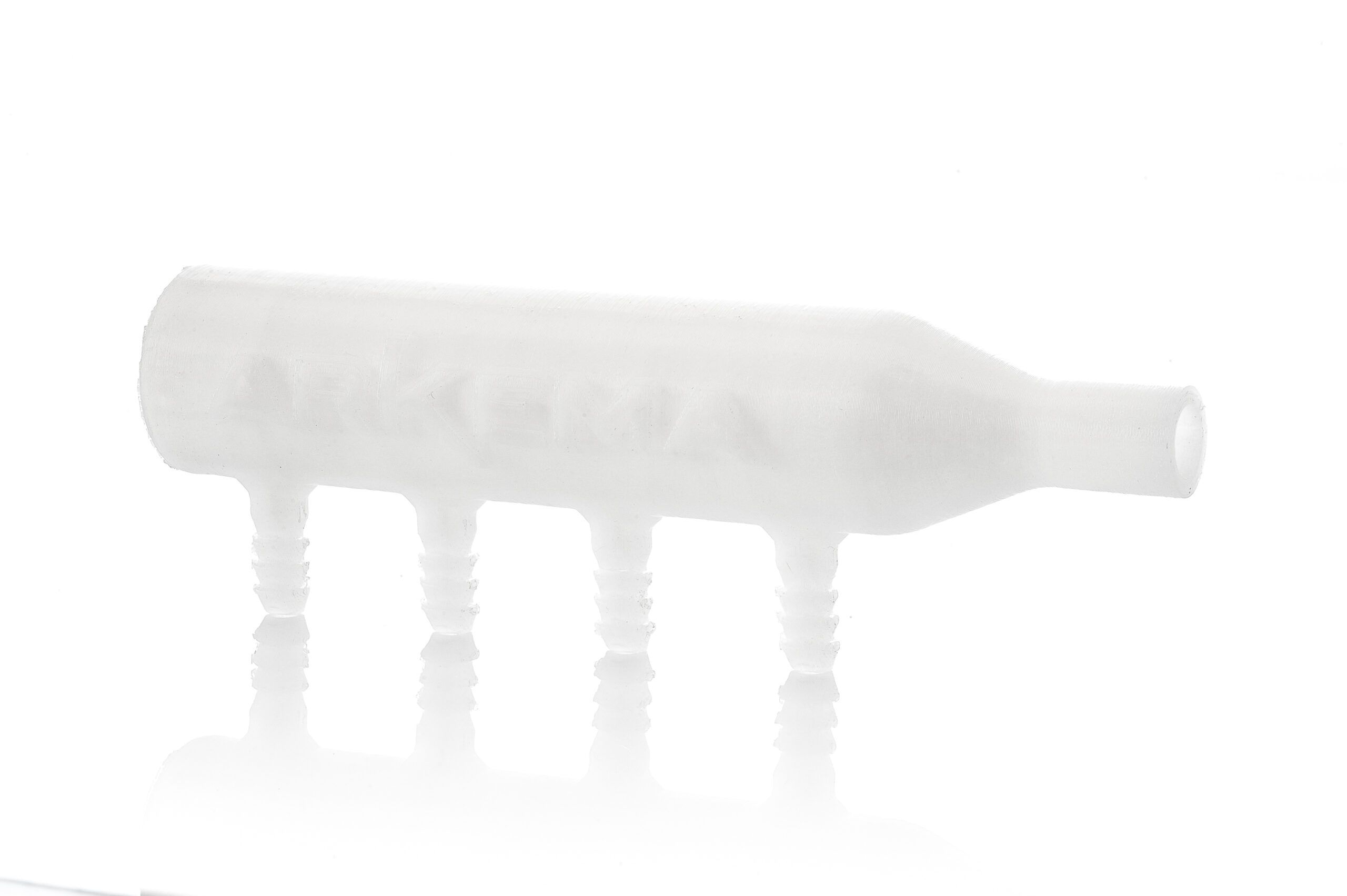UV resistance refers to a substance’s ability to resist ultraviolet (UV) light, including sunlight. UV light can cause discoloration or degradation in a final part.
Why are UV-resistant materials important?
In 3D printing, UV-resistant materials are necessary should a part or model be exposed to sunlight – or other UV light – for prolonged periods of time. UV-resistant plastics, in particular, will not typically change in appearance be in through yellowing, leaching dye color, bleaching, or the formation of stress cracks. With UV-resistant materials, mechanical properties will also remain intact; they will maintain strength, elasticity, and hardness, and will not become brittle.
Common uses of UV-resistant materials
Applications intended for outdoor use are one common use of UV-resistant materials. Weatherproof applications, in particular, are great candidates for UV-resistant materials.
What else should you know?
UV light affects polymers through a process called “photooxidative degradation,” which results in the breaking of polymer chains – and eventually resulting in a material’s complete degradation.
"UV-stabilized" materials have had a stabilizer added to the resin that resists UV rays and prevents UV degradation
When creating a part, you should be sure to know the difference between “continuous” and “intermittent” exposure to UV rays, with continuous exposure being the more serious of the two
FFF 3D printing materials, such as ASA – a variation of ABS developed for UV resistance – and PVDF have good UV-resistant properties. The UV resistance of these FFF materials can also be increased using additives. This gives FFF 3D printing materials an advantage over SLA materials, as the process is based on UV light, and are not usually UV-resistant unless they undergo post-processing
Our material partners
Here are some details about Ultimaker’s UV-resistant material partners. You can find out more on the Ultimaker Marketplace.
Arkema
FluorX™ is a tough, semi-crystalline fluoropolymer made from Arkema’s Kynar® PVDF. It is formulated for printability, and is a great option for parts subjected to demanding conditions, such as solvents, acids, fire, and UV radiation.
"Kynar® PVDF has a 50 year legacy in outdoor applications due to its tremendous resistance to sunlight and UV rays,” Steven Serpe, Market Manager, Specialty Powders and 3D Printing at Arkema, said. “Some of the world’s most famous buildings have been coated in Kynar® PVDF based paint to last decades without degrading or discoloring. This same performance can now be achieved in 3D printed objects."
A part printed in Arkema FluorX™ PVDF
BASF
Ultrafuse ASA is a high-performance thermoplastic with similar mechanical properties as ABS, but offering additional benefits, making it a good choice for many types of applications.
DSM
Arnitel® ID 2045 is a highly flexible TPC (thermoplastic copolyester) that can be used in a broad range of applications. It has better UV and chemical resistance compared to others of its type, such as TPU (thermoplastic urethane).
MCPP Netherlands BV
DURABIO™ is a bio-based, BPA-free engineering 3D printing material developed by Mitsubishi Chemical. With high transparency similar to PMMA but better impact behavior and improved heat resistance, DURABIO™ closes the gap between PC and PMMA.
With excellent weathering, UV stability, impact performance, and stiffness, 3Diakon™ is an ideal material of choice for outdoor applications and uses and for casting processes where a clean burn to ensure low ash residue is critical to performance.
"We believe that DURABIO™ and 3Diakon™ have outstanding print results when using our print suggestions,” Sales & Marketing Manager at MCPP Netherlands BV, said. “The Ultimaker Marketplace helps the end-user with finding the optimized print properties.”
Solvay
Solef(R) PVDF AM Filament is not only UV resistant but also resistant to a broad range of harsh chemicals, intrinsically fire retardant, and temperature resistant up to 130°C. This unique combination of properties with the ease of printing the material enables the access to a broad range of applications.
"Solef(R) PVDF AM Filament is not only UV-resistant, but also resistant to a broad range of harsh chemicals, intrinsically fire retardant, and temperature-resistant up to 130°C,” Sophia Song, Business Incubation - Additive Manufacturing at Solvay, said. “This unique combination of properties with the ease of printing the material enables the access to a broad range of applications.”
A part printed in Solvay Solef(R) PVDF AM Filament
Interested in learning more about Ultimaker’s UV-resistant material partners? Visit the UV-resistant materials page on the Ultimaker Marketplace.
You can also explore Ultimaker’s range of 3D printers that are compatible with UV-resistant materials.























